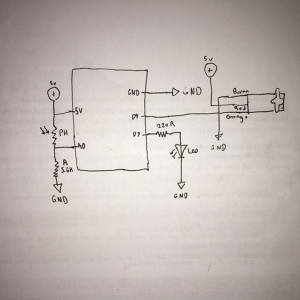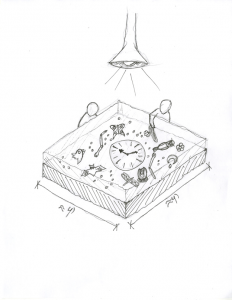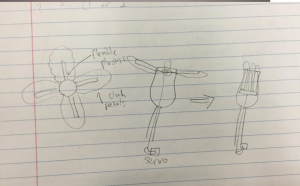Our proposal is viewable here:
https://docs.google.com/a/andrew.cmu.edu/document/d/1Qf8wJOCypmaFD2B2g7FGRG7sbgCcQkrxd5gZGeGTDiE/edit?usp=sharing
16-223 Project Proposal
Johnny Wu, Zain Islam-Hashmi, Matthew Gruber
One project that we took inspiration from was “Ephemera” by the Austrian-firm Mischer’Traxler (https://www.mischertraxler.com/projects_ephemera.html). The project had a similar idea to our original intentions with plants and wildlife that start to collapse and hide themselves when they sense human movement and activity closeby. This idea carried over into project with the theme of nocturnal life, and having movement/life during the daytime/in the light, but then also having specialized nocturnal movement when the lights are off.
We began with the question, how does one teach the concept of nocturnal life to children? After iterations of why-how laddering, our idea at its most basic is explaining nocturnal life to young children. We wanted to compound on “Ephemera” to teach children about this concept. Our idea is to vividly display the diverse amount of creatures that are active at night that children might not get the chance to see. With a table of light responsive creatures, they can learn very directly about the different kinds of nocturnal animals. Thus, the main audience for our project is young children. Additionally, our secondary audience would be the parents of the children. The young children will see nocturnal creatures light up and move when they cover them with shadows. The audience may remember that their actions have a lasting impact.
This project has the potential to become very complicated, so there were some potential features we did not include. We chose to ignore fully articulating the animals and their movement, as it would be too complicated given the timeframe and our skills. We also chose to make it a table of creatures rather than a wall as it would be easier for the children to create shadows. Even without these features, there are many other parts of the project to test. Mechanisms and factors to test include the opening-closing of flowers with the tabling, the application of multiple photocell sensors to multiple LEDs and Servo-motors (wiring), and also special joints for animal parts such as the snake, rat and fox tails/legs. Some quantitative metrics could be the number of animals/plants that are working as we expected, the number of LEDs that are wired correctly, or number of properly functioning photocells. Some qualitative metrics could be the brightness of the LEDs, the specific movement of animals, as well as the desired degree of accuracy of animal anatomy.
We hope to divide the labor and tasks as equally as possible. We will have three areas of focus: coding, wiring, and fabrication. Matt will be Coding-head, Johnny will lead wiring and circuitry, and Zain will be in charge of fabrication. These people will be in charge of/plan out the factors for each of these components. However, to make sure everyone is participating and learning equally, we will be rotating between the three areas and taking turns. The head people indicated will lay out tasks and how-to’s for others to follow, and will check up on that individual, but will ultimately leave the other person to complete the designated tasks in order for everyone to learn from their strengths and weaknesses.


(Example drawing of final project)
[Example drawing of possible flower bloom mechanism]

Leave a Reply
You must be logged in to post a comment.